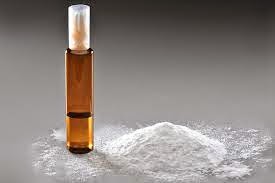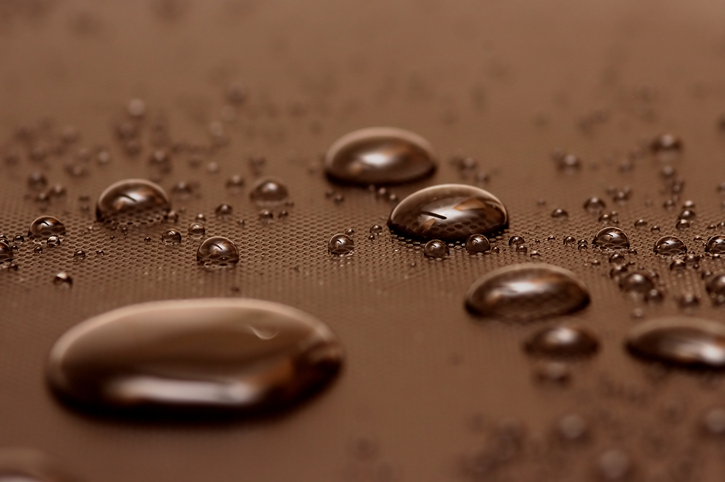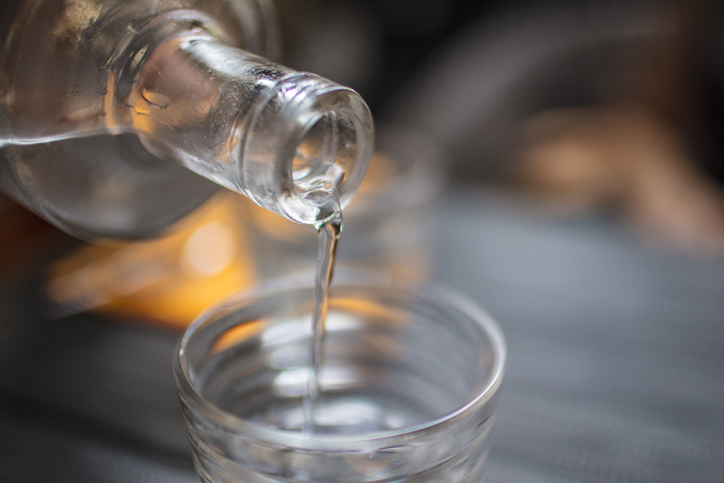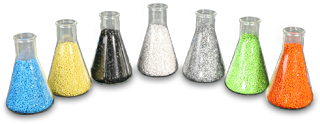
Filler Content in Plastics
Not the night sky, but rather an elemental map of filler in a polymer matrix. The bright spots are zirconium oxide in PMMA. Inorganic fillers are often added to thermoplastics to provide increased rigidity, hardness, impact strength, thermal conductivity, radiopacity, as well as reduced mold shrinkage. Filler, in the form of a powder, is normally […]

Monomer Analysis in Bone Cement
Polymer methyl methacrylate-based bone cement is commonly used in some hip and knee replacement arthroplasty surgeries to fix the metal components in place in the joint space. These cements are normally provided as two components. The first component, a powder, contains pre-polymerized PMMA powder along with some initiator (usually benzoyl peroxide) and a radiopacifier (usually […]

What’s in Your Coffee?
Coffee is prepared by steeping roasted ground coffee beans in hot water, and then removing the grounds. Caffeine, a naturally occurring stimulant found in coffee, can be removed from the coffee bean by a variety of methods. Benzene was originally used to extract caffeine from coffee in the early 1900s, but its toxicity resulted in […]

Set Free the Radicals!
Free radicals are unpaired electrons found on molecules, and can be the result of incomplete chemical reaction, radiation exposure, oxidation, or mechanical stress. Normally, free radicals are highly reactive and immediately react with other free radicals, oxygen, or other available chemical species. In some materials, however, free radicals can be temporarily stable, sometimes for years, […]

Is Your Liquid Tense?
Surface tension is the property that allows water striders to glide across the surface of a pond, for razor blades to float in a glass, and for water to stream from a hose for a certain length before breaking up into droplets. It is caused by intermolecular forces holding molecules in a liquid together, resisting […]
Thermal and Infrared Characterization of Materials
The increasing interest in material deformulation analysis and quantification of trace compounds in materials has led to the development of coupled analytical techniques. One of these techniques is TGA-FTIR, which combines the mass sensitivity of thermogravimetric analysis (TGA) with the compound identification ability of Fourier transform infrared spectroscopy (FTIR). In TGA-FTIR, the sample is placed […]

Water, Water, Everywhere Nor Any Drop To Drink
West Virginia’s drinking water situation has been getting a lot of press in the past week. Two toxic chemicals have been identified in the water (polyglycol ethers (PPH) and 4-methylcyclohexanemethanol), introduced from a tank rupture at Freedom Industries, a coal-cleaning operation. Prior to yesterday, only the methylcyclohexanemethanol had been know to be in the water, […]

ASTM Workshop on Additives in Biomedical Polymers: Call for Papers
Committee F04 is seeking abstracts for a workshop on Additives in Biomedical Polymers, to be held on May 6, 2014 in Toronto, Ontario. This workshop is intended to elicit discussion on the benefits, potential hazards, testing, regulatory considerations, and opportunites for standards activities related to intentionally incorporated additives in biomedical polymers. Information on how to […]
Presentation on Biodegradable Thiol-Modified Polyvinyl Alcohol Hydrogels
CPG researchers Yuri Svirkin, Adam Kozak, and Gavin Braithwaite will be presenting their work on thiol-modified PVA hydrogels at the Fall Materials Research Society Meeting in Boston at 4:45 pm on December 3rd (Paper E5.09). Abstract Poly(vinyl alcohol) (PVA) is a well-respected biomaterial and forms highly hydrated hydrogels. It has been used in a number […]

How Dense is that?
Density, or the ratio of the mass of an object to its volume, is a commonly reported material parameter. Density is influenced by the chemical composition of the material, crystallinity, and porosity. The chemical composition depends on the elements that make up the material. Plastics are normally composed of hydrocarbons (carbon and hydrogen), which have […]
